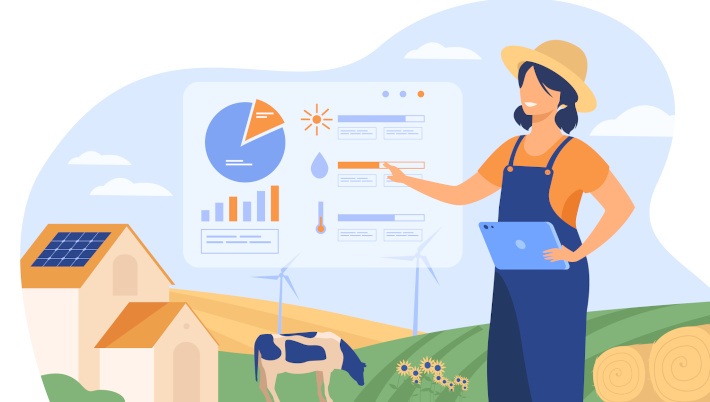
Efficient, Connected, Sustainable
Smart farming is transforming agriculture. From automated irrigation systems to remote fence monitoring, digital technologies help farmers reduce labor, save time, and boost productivity—even in remote rural areas. With LPWAN technologies like LoRaWAN®, these solutions are now affordable and accessible, even without mobile network coverage.
The Future of Agriculture: Smart Farming with LPWAN
Digital technologies are increasingly shaping modern farming. Smart farming stands for the intelligent connection of devices, machines, and systems to automate tasks, collect data, and support data-driven decision-making.
However, many farms in rural areas still struggle with poor or no mobile network coverage, making digital transformation a challenge. This is where LPWAN technologies like LoRaWAN® come into play: They enable reliable, energy-efficient data transmission over long distances—even in remote fields and pastures.
Why LPWAN is the Perfect Fit for Agriculture
LPWAN (Low Power Wide Area Network) offers:
- Long range & low power consumption
- Cost-effective installation and operation
- Ideal for low-data-rate and non-time-critical applications
This makes LPWAN the ideal solution for monitoring large, hard-to-access areas such as grazing land or remote water stations.
Smart Farming in Practice: Real-World Use Cases
Fence Monitoring
Electric fences often span large areas. With LPWAN-enabled sensors, voltage levels are monitored at defined intervals. If a fault or drop in voltage is detected, the farmer receives an automatic alert and can respond promptly—saving time and avoiding potential livestock escapes.
Gate Status Detection
LPWAN sensors detect whether gates are open, closed, or left open too long. Data is sent to a central server and visualized in a browser or app. If a gate remains open unexpectedly, the system triggers an alert.
Water Level Monitoring
Ultrasonic sensors in water troughs or tanks measure fill levels and trigger refilling via motorized valves. Farmers can monitor all troughs and tanks remotely. A dashboard shows current volumes and consumption trends, enabling proactive planning and efficient use of resources.
Plan Smarter, Work Smarter
Without smart technology, farmers would need to check every fence, gate, and trough manually—costing valuable time. LPWAN solutions streamline daily routines and free up resources for other tasks. Even small-scale farms with limited infrastructure benefit from these affordable, low-maintenance systems.
Interested in Smart Farming?
STACKFORCE provides ready-to-integrate protocol stacks and wireless communication solutions tailored for agricultural needs. Let’s talk about how to bring your farm into the digital age.

